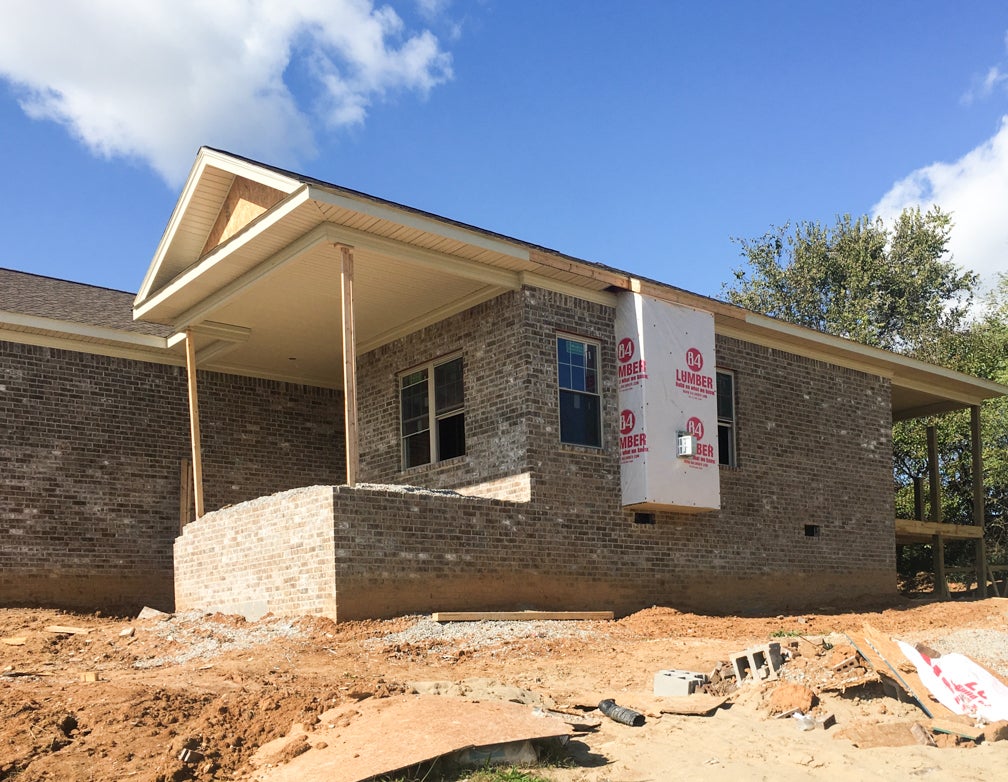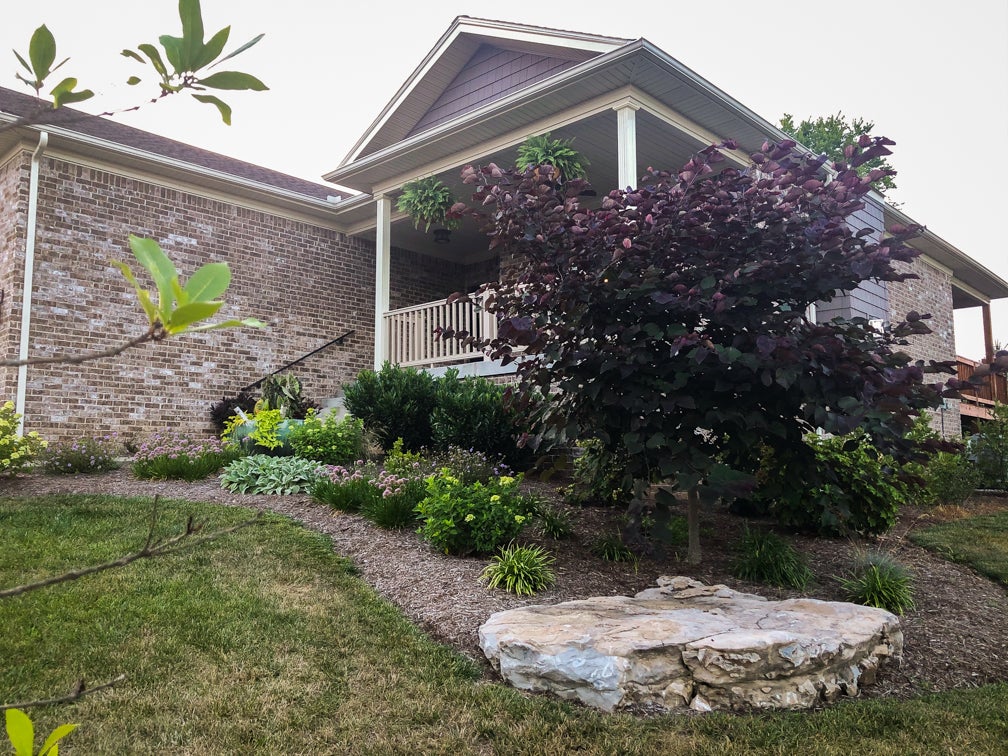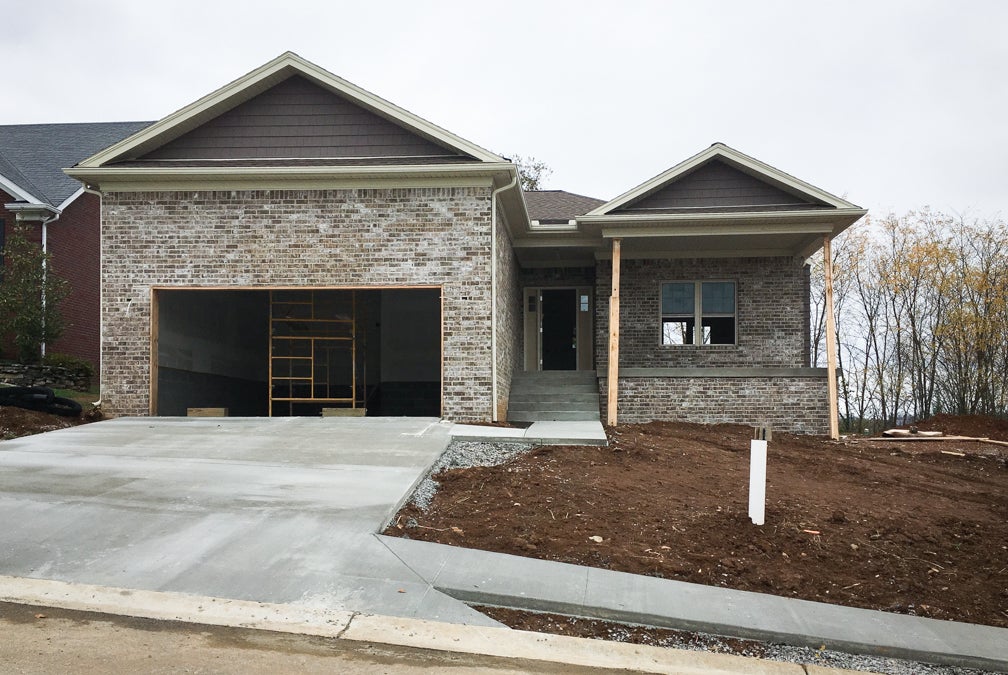You might wonder what selecting a house plan or having house plans drawn has to do with landscape — and it’s everything!
Dreaming about your new home or structure and selecting the perfect plan are such fun parts of the process, but often we get so excited over perfect plans we forget to consider their feasibility for the site. Site and building synchronization issues are all too common with new builds — we’ve all seen them and some unfortunate homeowners have experienced the nuisance that comes with this lack of consideration.
There can be many issues with simply selecting a plan out of a magazine, Pinterest, or the internet without careful attention to how the building will function and look. Sure, sometimes it can work like a dream, but I’d say the majority of time there are hiccups in construction and additional costs.
That said, plans on the internet can definitely save you money and may be used for inspiration and space layouts as long as you’re willing to make a few changes if needed. Those challenges can also be avoided with forethought and investing in professionals who understand grades, orientation and views.
Grade and topography are of utmost importance when selecting plans. Evaluating the site and understanding drainage is critical to a successful build. A house towering out of the ground more than intended is not only an aesthetic eyesore, but can also cost a lot more money — and can make you wonder if you are even looking at the same plan now that the house is 6-feet out of the ground while it was supposed to be a ranch. We’ve seen it happen!
Even if the structure ends up as little as 1.5-2-feet more out of the ground, that means more steps, more transitions, or an overall lack of connection to the site. Not only does this cost more on the front end with more footings, more walls, more concrete, gravel, brick or stone, it’ll also cost a lot more to achieve the desired look because you’ll be spending a lot on terraces, retaining walls, steps, and landscape to make the house fit the site.
Solve this issue by hiring an architect and coordinating with a landscape professional to set the grade and make sense of the existing topography. We often see areas where the plans didn’t address where retaining would be needed and at the end of the project the customer ends up with cheap walls that need to be rebuilt after only a few weeks or months.
Walls are an opportunity to tie into the existing architecture and create a nice garden space instead of an afterthought. Grade will also matter for drainage, where all of the water should flow away from the foundation, preferably through PVC pipe instead of corrugated pipe.
In short, the best structure is nestled into the site, works with the topography, and feels at harmony in its setting. The additional effort on the front end will be worth it.
The positioning of the house and appropriately placed windows and doors, along with landscaping, can also save energy. Windows should be strategically placed and sized on the south side to maximize solar gain in winter with some cover (awnings, large eaves, pergolas) to minimize the summer heat.
Try to minimize north and west facing windows, as that is where the strong winds and hot summer heat are the most intense. Passive solar design is the use of the sun’s energy for the heating and cooling of your living spaces. There is a lot more to the design of a passive solar home with the orientation being one of the first considerations.
Other considerations include thermal mass, ventilation and shading to name a few. The placement of the house will also be important for when and where you want the sun to spill in and where you can place solar panels if you want them.
All are important thoughts for maximum efficiency and comfort. Again, an architect can help here and is definitely worth the investment.
Lastly, consider how the inside and outside function together with views and function. Hiring a professional landscape designer or architect during the planning phase is very beneficial — especially when thinking about the inside and outside relationships of the space, highlighting or screening certain views, and making sure the outside matches the quality and aesthetic of the inside.
It’s amazing to me how much thought, time and money can go into a new home’s interior design and architecture and how little importance is placed on the outside. Extraordinary homes deserve to be finished with extraordinary landscapes that complement the architecture and overall quality of the home.
After many building projects, I understand that landscape is last on the list in terms of thought process and budget. I encourage people who are building to think of the landscape as part of their home and either hold money for the landscape budget or wait until they can install a pleasing landscape.
Building a home comes with many decisions and considerations and the plans and site considerations are just the first few of thousands. Avoid surprises with a plan and site that fit together and are thoughtful of grades, positioning, and views, which can make even the simplest of plans seem spectacular.













